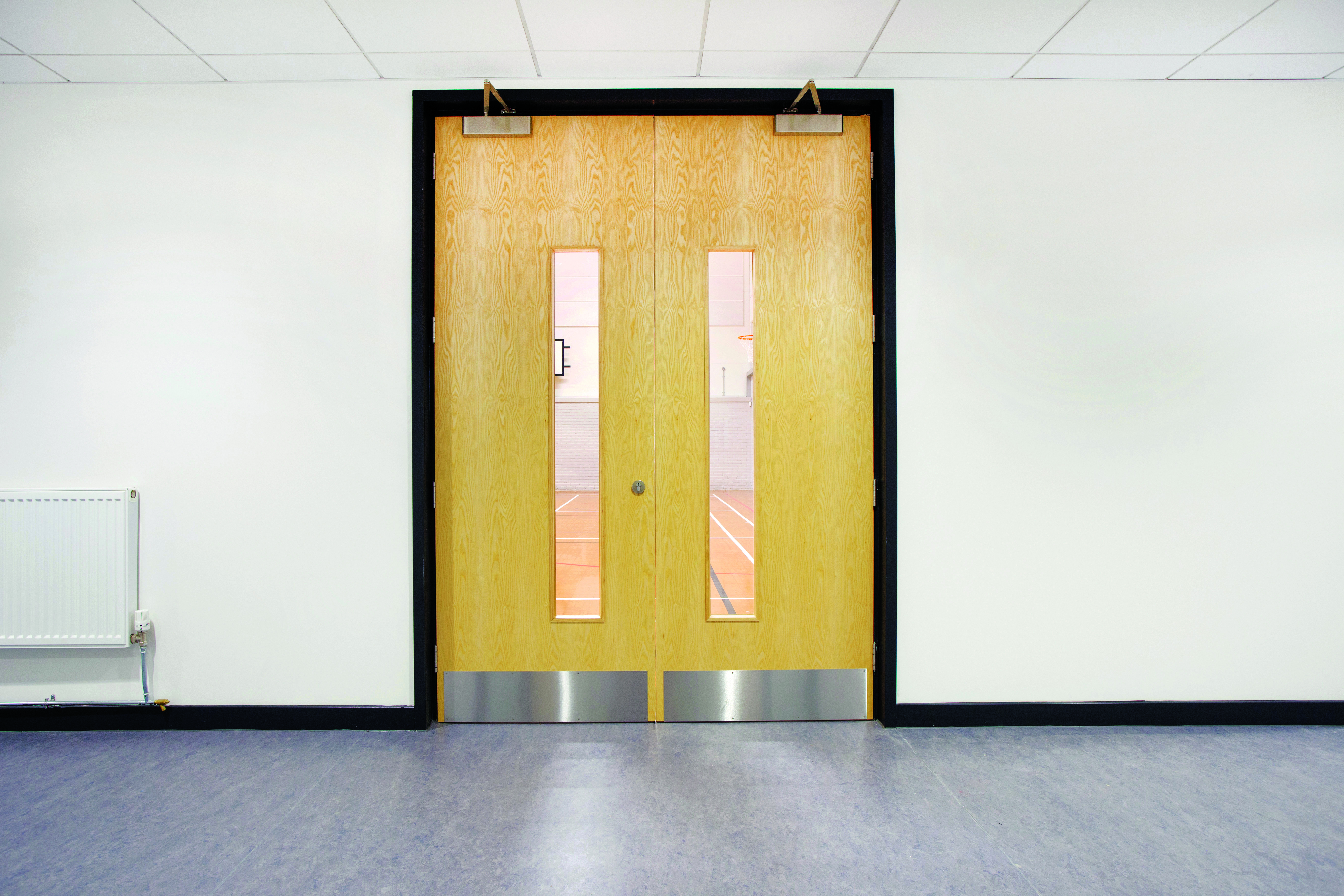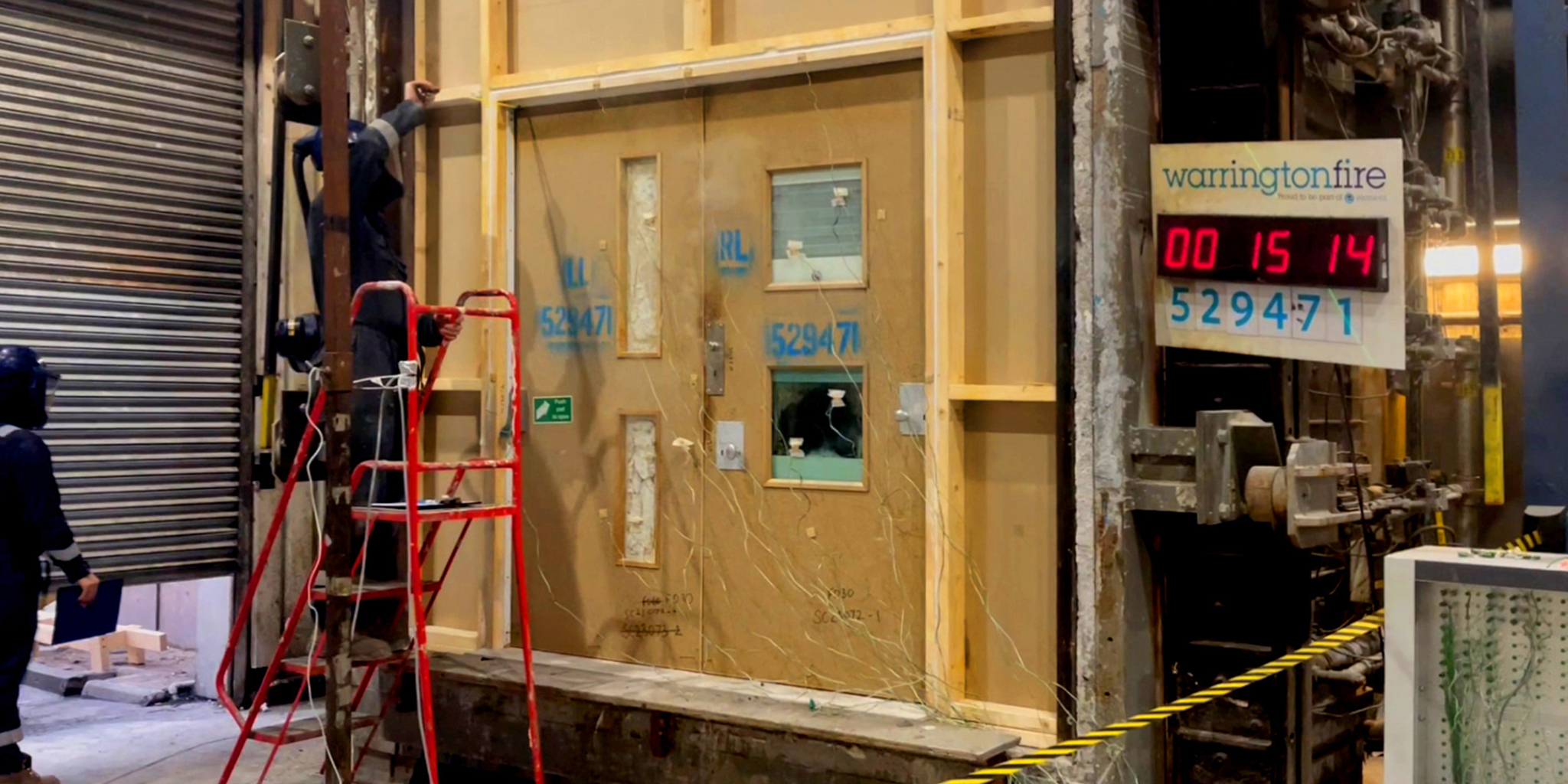The Ministry of Housing, Communities and Local Government (MHCLG) has recently written to Local Authority Building Control and issued an explanatory note concerning the testing of fire doors (Note 16, 31st July). The advice comes from testing on composite door types following the Grenfell fire.
The intention is to provide a reminder that fire doors should be able to perform with the required level of fire resistance when exposed to fire from either side (when closed), with reference to guidance in Approved Document B (AD B) and based on relevant and appropriate test evidence.
Note 17 has subsequently been issued by MHCLG as a clarification to say that the advice for testing fire doors from both sides provided in Note 16 applies only to composite doors.
AD B recommends testing either to BS 476 Part 22 (1987) or to BS EN 1634 (2014).
Both standards contain a provision, based on test experience and knowledge of timber and metal door systems, for doors with symmetrical door leaves to be tested only from one side where a relatively weaker opening orientation can be identified for resistance against fire.
For timber doors that weaker orientation has been identified and confirmed as the orientation opening into the test furnace. The protocol for testing timber doors on that basis derived from test evidence is well established since BS 476 was originally written and introduced.
BS EN 1634 similarly confirms the test protocol, based on pan-European peer review. But it notes that the rule does not apply to composite doors because of insufficient test information.
There is a longstanding and consistent consensus for the test protocol applying to timber doors, established across the door industry involving test and certification organisations and other technical authorities. The protocol is confirmed by the BSI responsible standards committee and supported by the Fire Test Study Group (who include the UK’s Notified Bodies for fire resistance testing.)
Recent fire resistance test evidence submitted to MCHLG also confirms the established test protocol.
ASDMA wishes to confirm that it strongly supports product approval and development investment in the testing of fire door systems, designs and specifications as already deeply rooted practice, particularly established within the bespoke and custom-designed specifier timber door sector.
ASDMA also confirms the validity of technical assessments for modifications to already tested systems based on relevant, appropriate and applicable test experience, as noted in Annex A of Approved Document B and confirmed under Passive Fire Protection Federation guidelines.
It is also a recommendation of ASDMA that product approval be endorsed by relevant third-party product certification schemes which provide scrutiny of test evidence together with product and process control auditing, including review of fire resistance testing (also leading to a Global Assessment confirmation of scope of application, linked with product design specifications).
*Please contact an ASDMA member for further information and help.*
MHCLG Note 17, 28th August, can be found at: https://www.gov.uk/government/publications/testing-and-classification-of-composite-fire-doorsets-advice-note
Download this information update here: ASDMA_ClarificationDoorTesting



